-
 Bitcoin
Bitcoin $106,731.2224
-1.05% -
 Ethereum
Ethereum $2,444.9804
-1.20% -
 Tether USDt
Tether USDt $1.0003
0.01% -
 XRP
XRP $2.1882
0.09% -
 BNB
BNB $651.1435
-0.61% -
 Solana
Solana $148.3252
-2.09% -
 USDC
USDC $1.0000
0.01% -
 TRON
TRON $0.2787
0.55% -
 Dogecoin
Dogecoin $0.1598
-3.16% -
 Cardano
Cardano $0.5520
-2.43% -
 Hyperliquid
Hyperliquid $39.0960
-2.64% -
 Bitcoin Cash
Bitcoin Cash $516.9519
2.98% -
 Sui
Sui $2.7011
-2.95% -
 Chainlink
Chainlink $13.0582
-1.71% -
 UNUS SED LEO
UNUS SED LEO $8.9250
-2.53% -
 Stellar
Stellar $0.2359
-0.18% -
 Avalanche
Avalanche $17.3856
-3.73% -
 Toncoin
Toncoin $2.8095
-3.56% -
 Shiba Inu
Shiba Inu $0.0...01121
-1.95% -
 Litecoin
Litecoin $85.2795
-0.85% -
 Hedera
Hedera $0.1471
-2.15% -
 Monero
Monero $319.8004
1.12% -
 Dai
Dai $1.0001
0.01% -
 Ethena USDe
Ethena USDe $1.0001
0.02% -
 Bitget Token
Bitget Token $4.5344
-1.07% -
 Polkadot
Polkadot $3.3224
-2.96% -
 Uniswap
Uniswap $6.9697
-2.75% -
 Aave
Aave $266.1658
-2.25% -
 Pepe
Pepe $0.0...09414
-3.41% -
 Pi
Pi $0.4913
-3.29%
How to view the contract address of a token in Exodus wallet?
To manage your tokens effectively in Exodus wallet, locate the token's contract address in the 'Info' or 'Details' section, and verify it using a blockchain explorer.
Apr 06, 2025 at 12:42 pm
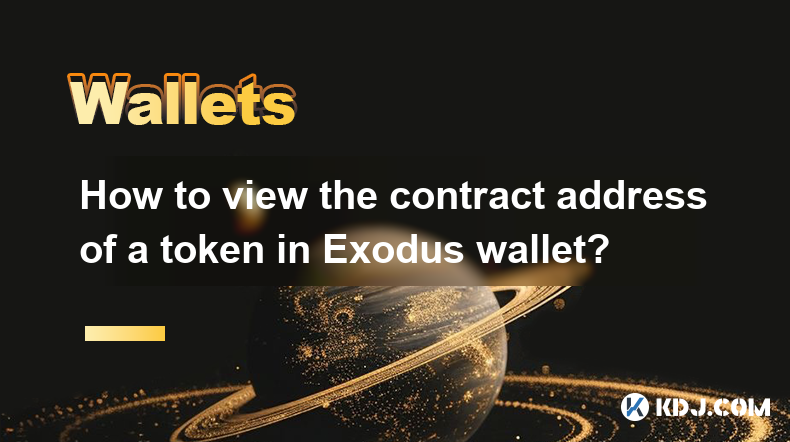
When using the Exodus wallet, understanding how to view the contract address of a token is crucial for managing your cryptocurrency assets effectively. The contract address is a unique identifier for each token on the blockchain, and it's essential for verifying the authenticity of the token and for interacting with decentralized applications (dApps). In this guide, we will walk you through the steps to find the contract address of a token in the Exodus wallet, ensuring you can manage your tokens with confidence.
Accessing the Exodus Wallet
To begin, you need to access your Exodus wallet. Open the Exodus application on your computer or mobile device. If you haven't already, log in using your password or biometric authentication. Once you're logged in, you'll be greeted with the main dashboard, which displays your portfolio of cryptocurrencies.
Navigating to the Token Details
From the main dashboard, locate the token for which you want to view the contract address. Click on the token to open its detailed view. This view will show you the current balance, transaction history, and other relevant information about the token. To proceed, you need to access the token's settings or additional information section.
Finding the Contract Address
In the detailed view of the token, look for an option labeled "Info" or "Details." This section often contains additional information about the token, including its contract address. Click on this option to expand the information panel. Within this panel, you should see a field labeled "Contract Address" or something similar. The contract address will be displayed as a long string of alphanumeric characters.
Verifying the Contract Address
Once you have located the contract address, it's a good practice to verify it against a reliable source. You can do this by visiting a blockchain explorer like Etherscan for Ethereum-based tokens or BscScan for BEP-20 tokens on the Binance Smart Chain. Enter the contract address into the search bar of the blockchain explorer to ensure it matches the token you are interested in. This step helps prevent interacting with fraudulent tokens.
Using the Contract Address
With the contract address in hand, you can now use it for various purposes. For instance, you can add the token to other wallets that support custom tokens, interact with dApps that require the token's contract address, or even perform advanced operations like token swaps or staking. Always ensure you are using the correct contract address to avoid any potential issues or losses.
Troubleshooting Common Issues
If you encounter any issues while trying to view the contract address in Exodus, there are a few common problems you might face. First, ensure that your Exodus wallet is up to date, as newer versions may have different interfaces or additional features. If the token you are looking for is not supported by Exodus, you won't be able to view its contract address within the wallet. In such cases, you may need to use a different wallet or a blockchain explorer directly.
Additional Tips for Managing Tokens
Managing tokens effectively involves more than just knowing their contract addresses. Here are some additional tips to help you manage your tokens in Exodus:
- Regularly update your wallet to ensure you have the latest security features and user interface improvements.
- Use strong, unique passwords for your wallet and enable two-factor authentication if available.
- Keep your recovery phrase secure and never share it with anyone.
- Monitor your transaction history regularly to detect any unauthorized activities.
- Diversify your portfolio to mitigate risks associated with holding a single type of token.
Understanding the Importance of Contract Addresses
Contract addresses are fundamental to the operation of tokens on blockchain networks. They serve as the unique identifier for each token, allowing the blockchain to recognize and process transactions involving that token. Understanding and correctly using contract addresses is crucial for safely interacting with the decentralized ecosystem. Whether you're adding a new token to your wallet, participating in a token swap, or engaging with a dApp, the contract address is your key to ensuring you're interacting with the correct asset.
Exploring Advanced Features with Contract Addresses
Once you're comfortable with viewing and verifying contract addresses, you can explore more advanced features in the cryptocurrency space. For instance, you can use contract addresses to interact with decentralized finance (DeFi) platforms, where you can lend, borrow, or stake your tokens to earn interest or rewards. Additionally, you can participate in token airdrops or initial decentralized offerings (IDOs) by providing the correct contract address to receive new tokens.
Ensuring Security with Contract Addresses
Security is paramount when dealing with cryptocurrencies, and contract addresses play a significant role in maintaining that security. Always double-check the contract address before performing any transaction or interaction. Phishing scams often involve fake tokens with similar names but different contract addresses, so vigilance is key. Additionally, never share your contract addresses publicly, as this could expose you to potential hacks or scams.
Integrating Contract Addresses with Other Tools
Beyond the Exodus wallet, contract addresses can be integrated with various other tools and platforms. For example, you can use contract addresses with decentralized exchanges (DEXs) to trade tokens directly from your wallet. You can also use them with portfolio trackers to monitor the performance of your tokens across different blockchains. By understanding how to use contract addresses effectively, you can enhance your overall cryptocurrency management strategy.
Common Questions Related to Viewing Contract Addresses in Exodus Wallet
Q: Can I view the contract address of any token in Exodus wallet?
A: No, you can only view the contract address of tokens that are supported by Exodus. If a token is not supported, you will need to use a different wallet or a blockchain explorer to find its contract address.
Q: How can I verify the contract address of a token?
A: You can verify the contract address by using a blockchain explorer like Etherscan or BscScan. Enter the contract address into the search bar, and the explorer will show you the details of the token, allowing you to confirm its authenticity.
Q: What should I do if I can't find the contract address in Exodus?
A: If you can't find the contract address in Exodus, ensure your wallet is up to date. If the issue persists, the token might not be supported by Exodus. In this case, use a blockchain explorer or another wallet that supports the token to find its contract address.
Q: Is it safe to share my contract address with others?
A: It is generally safe to share your contract address for receiving tokens, but be cautious. Never share your contract address in response to unsolicited requests, as this could be a phishing attempt. Always verify the legitimacy of the request before sharing.
Q: Can I use the contract address to add a token to another wallet?
A: Yes, you can use the contract address to add a token to another wallet that supports custom tokens. Simply enter the contract address into the wallet's "Add Custom Token" feature, and the token should be added to your wallet.
Q: What are some common uses for contract addresses?
A: Contract addresses are used for adding tokens to wallets, interacting with dApps, participating in token swaps or staking, and verifying the authenticity of tokens. They are essential for any operation involving tokens on a blockchain.
Q: How can I ensure the security of my tokens using contract addresses?
A: To ensure the security of your tokens, always double-check the contract address before any transaction. Use reputable blockchain explorers to verify the address, and never share your contract address publicly or in response to unsolicited requests. Keep your wallet software updated and use strong security practices like two-factor authentication.
Disclaimer:info@kdj.com
The information provided is not trading advice. kdj.com does not assume any responsibility for any investments made based on the information provided in this article. Cryptocurrencies are highly volatile and it is highly recommended that you invest with caution after thorough research!
If you believe that the content used on this website infringes your copyright, please contact us immediately (info@kdj.com) and we will delete it promptly.
- Powell, Stablecoin Regulation, and Circle's Bold Move: A New York Minute on Crypto's Future
- 2025-07-02 02:30:12
- Ethereum Price, Tom Lee, and Bitcoin: A New Era for Crypto?
- 2025-07-02 02:30:12
- Hoskinson, Ripple, Cardano DeFi: A New Era of Collaboration?
- 2025-07-02 02:35:12
- BlockDAG, ALGO, and the Crypto Trends Shaping 2025
- 2025-07-02 01:50:12
- Cold Wallet, Token, Gains: Is CWT the Smartest Crypto Move?
- 2025-07-02 01:10:12
- Pi Coin's Rocky Ride: Support Levels, Recovery Timeline, and What the Experts Are Saying
- 2025-07-02 01:10:12
Related knowledge
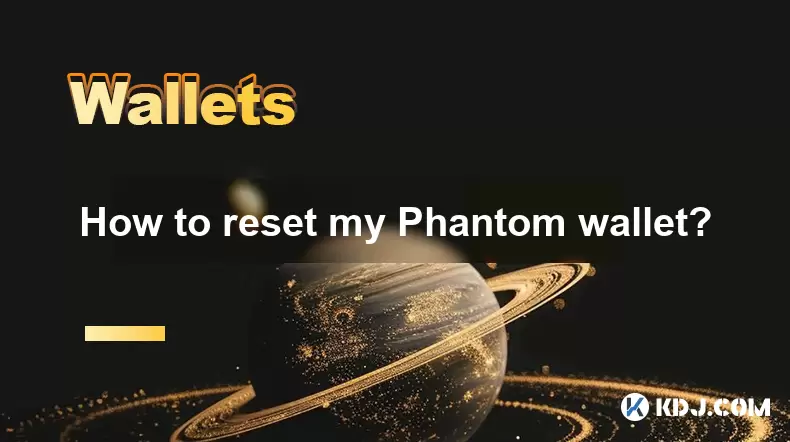
How to reset my Phantom wallet?
Jul 02,2025 at 12:36am
Understanding the Need for Resetting Your Phantom WalletIf you're using a Phantom wallet, you may encounter situations where resetting your wallet becomes necessary. This could be due to forgotten passwords, seed phrase issues, or account corruption. Phantom is a non-custodial wallet primarily used for interacting with the Solana blockchain, and it stor...
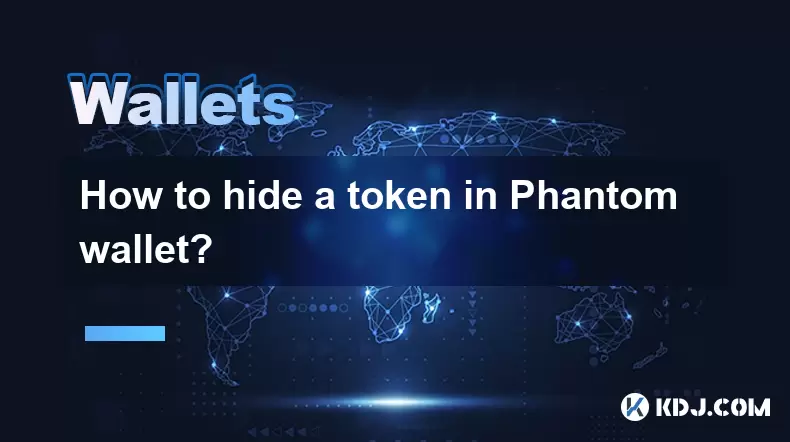
How to hide a token in Phantom wallet?
Jul 01,2025 at 05:49pm
Understanding the Phantom Wallet InterfacePhantom wallet is a popular non-custodial wallet used primarily for interacting with the Solana blockchain. It allows users to store, send, receive, and manage various tokens, including both fungible and non-fungible tokens (NFTs). Before attempting to hide a token, it's essential to understand how the wallet in...
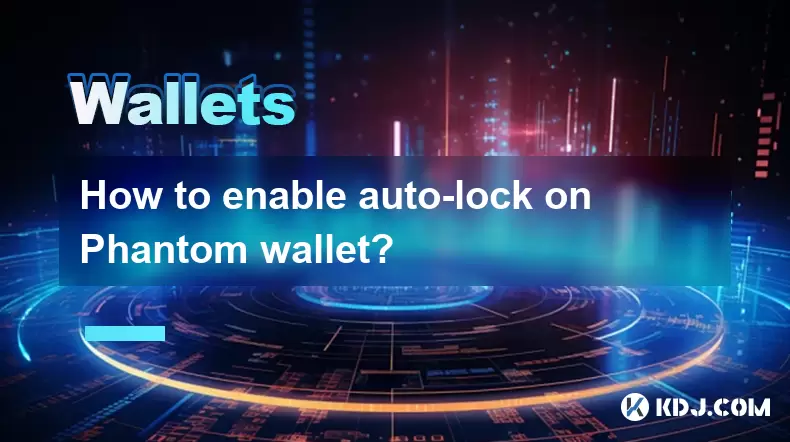
How to enable auto-lock on Phantom wallet?
Jul 01,2025 at 04:01pm
What is Auto-Lock in Phantom Wallet?Phantom wallet is a popular non-custodial cryptocurrency wallet used primarily for interacting with the Solana blockchain. One of its security features includes the ability to set an auto-lock timer, which ensures that the wallet locks itself automatically after a period of inactivity. Auto-lock enhances security by p...
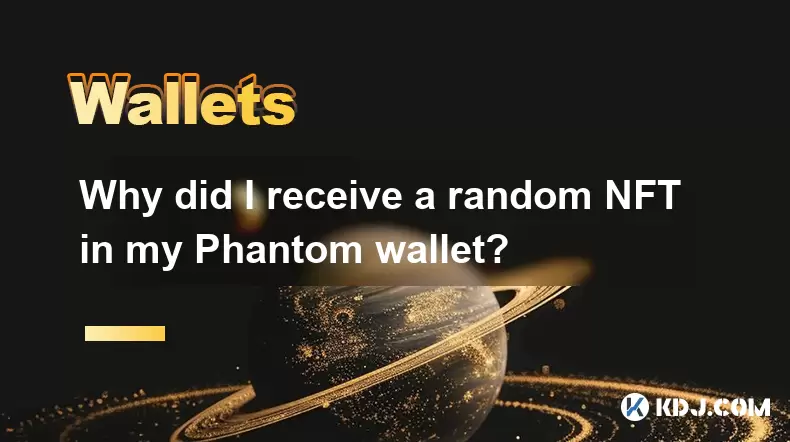
Why did I receive a random NFT in my Phantom wallet?
Jul 01,2025 at 09:00pm
Receiving an Unexpected NFT in Your Phantom WalletIf you've recently opened your Phantom wallet and noticed an unfamiliar NFT appearing in your collection, you're not alone. Many users have reported receiving random or unsolicited non-fungible tokens, often without any prior interaction with the project or sender. This phenomenon has become increasingly...
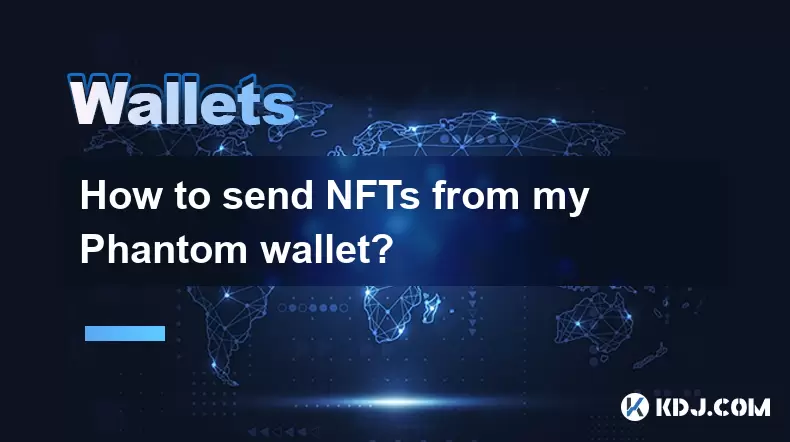
How to send NFTs from my Phantom wallet?
Jul 02,2025 at 03:15am
What is Phantom Wallet and Why Use It for NFT Transfers?Phantom wallet is a non-custodial cryptocurrency wallet primarily used for interacting with the Solana blockchain. It supports both tokens and NFTs, making it a popular choice among users who engage in decentralized finance (DeFi) or digital collectibles. The interface is user-friendly, allowing ev...
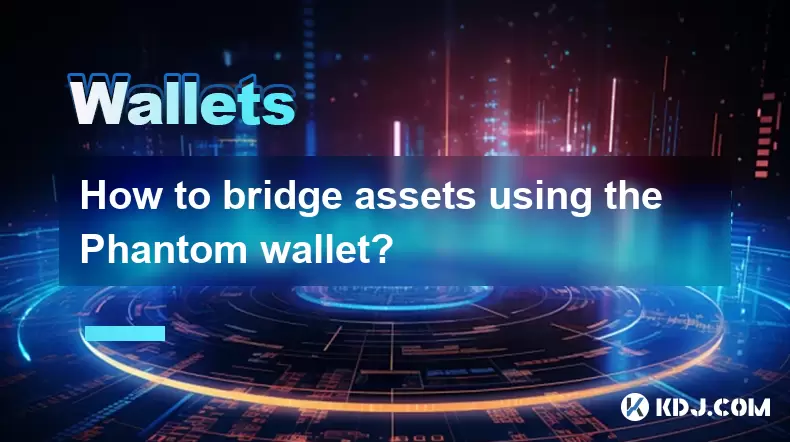
How to bridge assets using the Phantom wallet?
Jul 02,2025 at 02:50am
Understanding the Basics of Asset BridgingAsset bridging refers to the process of transferring digital assets from one blockchain network to another. This functionality is crucial in a multi-chain ecosystem where users may need to move tokens between different networks for various purposes, such as accessing decentralized applications (dApps), participa...

How to reset my Phantom wallet?
Jul 02,2025 at 12:36am
Understanding the Need for Resetting Your Phantom WalletIf you're using a Phantom wallet, you may encounter situations where resetting your wallet becomes necessary. This could be due to forgotten passwords, seed phrase issues, or account corruption. Phantom is a non-custodial wallet primarily used for interacting with the Solana blockchain, and it stor...

How to hide a token in Phantom wallet?
Jul 01,2025 at 05:49pm
Understanding the Phantom Wallet InterfacePhantom wallet is a popular non-custodial wallet used primarily for interacting with the Solana blockchain. It allows users to store, send, receive, and manage various tokens, including both fungible and non-fungible tokens (NFTs). Before attempting to hide a token, it's essential to understand how the wallet in...

How to enable auto-lock on Phantom wallet?
Jul 01,2025 at 04:01pm
What is Auto-Lock in Phantom Wallet?Phantom wallet is a popular non-custodial cryptocurrency wallet used primarily for interacting with the Solana blockchain. One of its security features includes the ability to set an auto-lock timer, which ensures that the wallet locks itself automatically after a period of inactivity. Auto-lock enhances security by p...

Why did I receive a random NFT in my Phantom wallet?
Jul 01,2025 at 09:00pm
Receiving an Unexpected NFT in Your Phantom WalletIf you've recently opened your Phantom wallet and noticed an unfamiliar NFT appearing in your collection, you're not alone. Many users have reported receiving random or unsolicited non-fungible tokens, often without any prior interaction with the project or sender. This phenomenon has become increasingly...

How to send NFTs from my Phantom wallet?
Jul 02,2025 at 03:15am
What is Phantom Wallet and Why Use It for NFT Transfers?Phantom wallet is a non-custodial cryptocurrency wallet primarily used for interacting with the Solana blockchain. It supports both tokens and NFTs, making it a popular choice among users who engage in decentralized finance (DeFi) or digital collectibles. The interface is user-friendly, allowing ev...

How to bridge assets using the Phantom wallet?
Jul 02,2025 at 02:50am
Understanding the Basics of Asset BridgingAsset bridging refers to the process of transferring digital assets from one blockchain network to another. This functionality is crucial in a multi-chain ecosystem where users may need to move tokens between different networks for various purposes, such as accessing decentralized applications (dApps), participa...
See all articles

























































































